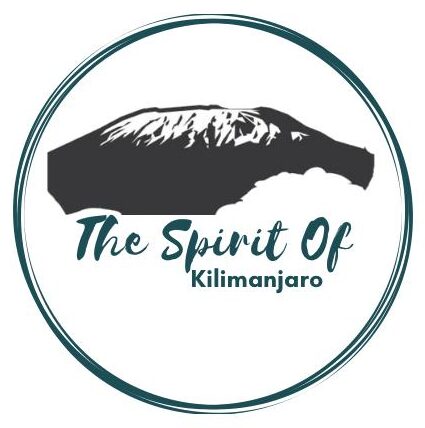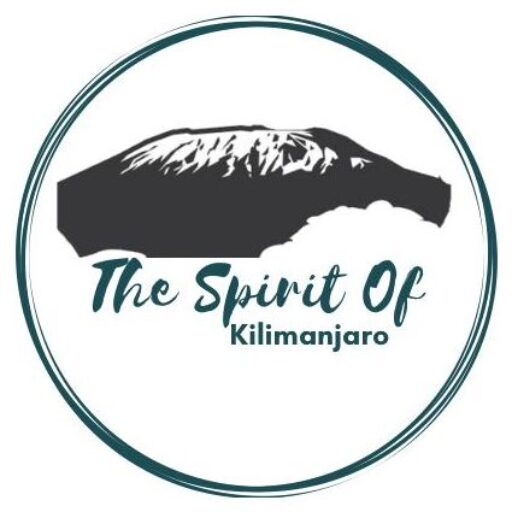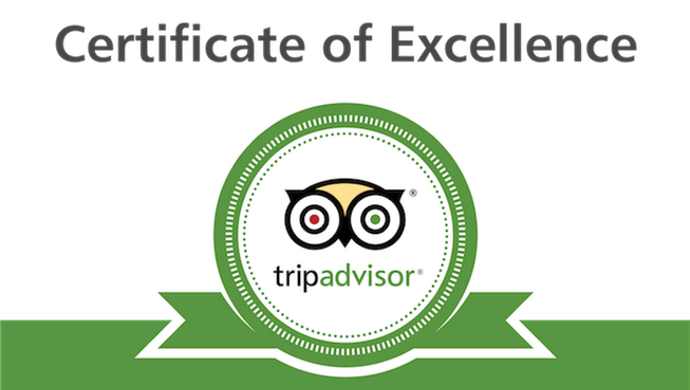Kilimanjaro Tourist guides, porters, and other crew structure an important a part of a real Kilimanjaro experience. one among the foremost famous climbers of the 20th century, Peter Boardman gave an apt description of guiding siblings
.
Their lives are linked by a love and profession to the mountains, and their company will enhance the experience of all those that wish to approach the mountains and learn.
This is really true presently in Kilimanjaro-the guides ’ job is not just to form it possible for you to succeed in the peak safe and sound, but also to make sure that the days that you ’ll spend on these rakes are fun and memorable. And it ’s not simply a job-it’s a culture and, in some ways, an outlook. It makes the Kilimanjaro guides like different from those plant on the rakes of other popular mountaineering destinations.
We’ve multitudinous purchasers who climbed Mt Kilimanjaro ten or further stretches ago. Ultimate of them don’t remember the names of routes, camps, or how the terrain looked, but all of them remember the names of their guards. The Kilimanjaro party leaders always leave a special imprint on mountaineers, and their proficiency largely determine if the rising are going to be successful or not.
So, when opting your Kilimanjaro adventure, choosing your guide is that the first and foremost decision to form.
Choosing the best Kilimanjaro guides
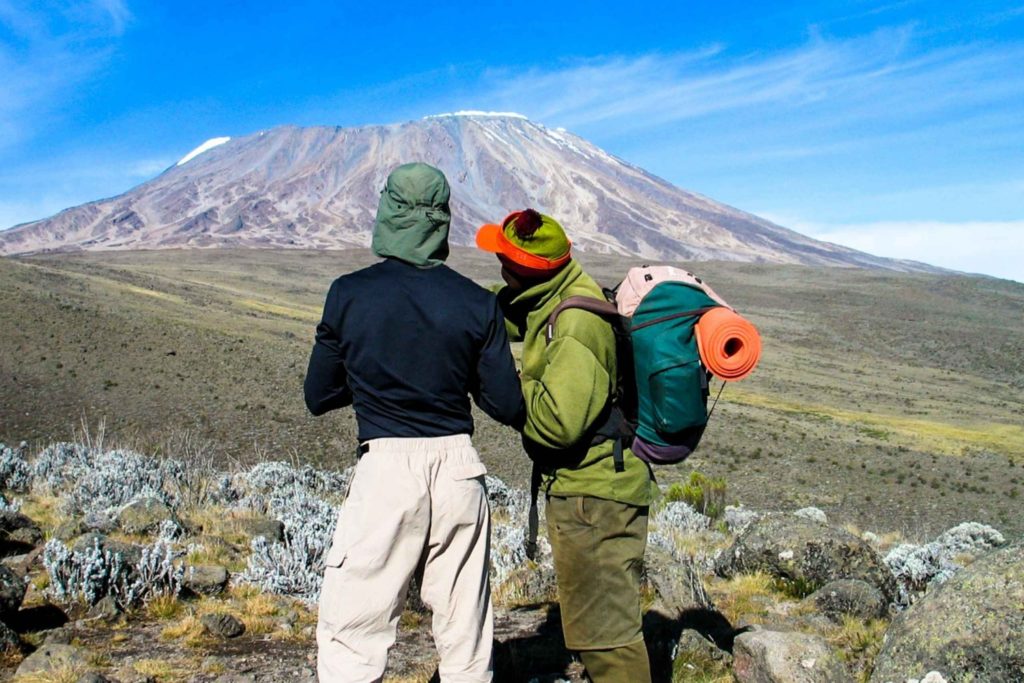
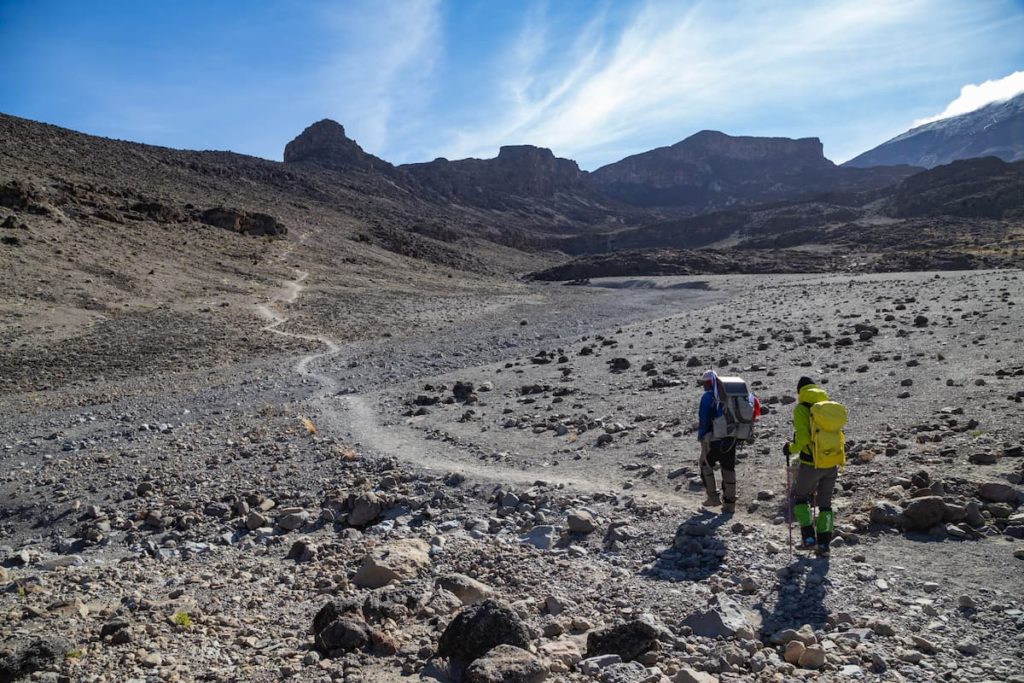
The informal Kilimanjaro guides and other mountain crew members work for Kilimanjaro 360. So far, the Kilimanjaro crew of our company has the following.
- 27 hand-picked lead guides, who are supported by 60 promised helpmate guides and over 1200 porters.
- Our guides have over 50 ages of combined dynamic work experience in leading mountaineers to the upmost of Kilimanjaro. we will confidently say that they know every recess and rift of Kilimanjaro and are well-prepared to reply to any breaking point.
- Over 11 000 people reached the peak of Mt Kilimanjaro in over 3500 treks led by our guiding crews.
- All of our guides speak English correctly and confidently.
Must-have Skills of the Kilimanjaro Guides
Each and every Kilimanjaro guide should have deep knowledge of a number of things. Briefly, their competencies could also be put into two distinct groups. the primary type of skill is known as “soft” skills, which are needed to form the experience enjoyable, amusing and memorable for you and for the crew. The second, “hard” skills – are needed to handle the sensible needs of the expedition, like camp management, crew composition, pathfinding, emergency response et al.
“Hard” skills
Medical training and first-aid within the high altitudes. A guide’s first priority and utmost responsibility is that the safety of each client. All of our guides are trained in both basic first-aid, but even have wilderness first-responder certificates, and have training in high altitude safety.
Preserve life – a guide should do everything which is required to form sure an injured person survives until full medical care is out there .
Relieve pain – a competent mountain professional should be capable of minimizing pain (both physical and emotional) of a sick client.
Prevent harm – everything should be done skillfully to make sure that the condition of an injured person doesn’t worsen and therefore the possibility of full recovery is preserved.
Major accidents are relatively rare on Kilimanjaro – only recorded once during a decade on certain parts of the mountain. A more important and customary concern is acute hypoxia or AMS. this is often a concern for climbers on any mountain of serious altitude and Kilimanjaro is not any exception. A talented guide should be capable of diagnosing this sickness at the very earliest stages, treat it to attenuate long-lasting impacts, and organize evacuation if necessary.
Rescue & Evacuation operations. just in case an emergency happens, a Kilimanjaro guide should be ready to organize the safe and fast evacuation of a diseased person to a medical facility. In practice, it means a guide should be able to: (a) get in touch with a helicopter rescue service; (b) comprehensively explain the situation to the pilot and therefore the concerns to a ground medical team; (c) prepare a diseased person for transportation and stop any longer harm.
When helicopter evacuation isn’t necessary, the guide should be ready to organize manual transportation on a special stretcher.
Mountain topography knowledge. Professional Kilimanjaro guides should know every nook and cranny of the Mountain. If for a few reasons the hiking team has got to get off the established trail (e.g. just in case of heavy rain), the guide should choose the shortest and safest thanks to the closest camp or right down to the exit. a number of our guides worked on the Mt Kilimanjaro rescue team and skills to urge to certain destinations in a fast manner.
Strong flora and fauna knowledge. We believe that your Kilimanjaro adventure shouldn’t be just safe and successful – it should even be insightful and entertaining. After all, Kilimanjaro features a unique ecosystem, with some plants to be found nowhere else in the world. With some luck, you’ve got an opportunity to identify some wildlife on the trail. a talented guide should be capable of telling you more about the vegetation and therefore the animals of Kilimanjaro in an easy-going, yet interesting manner.
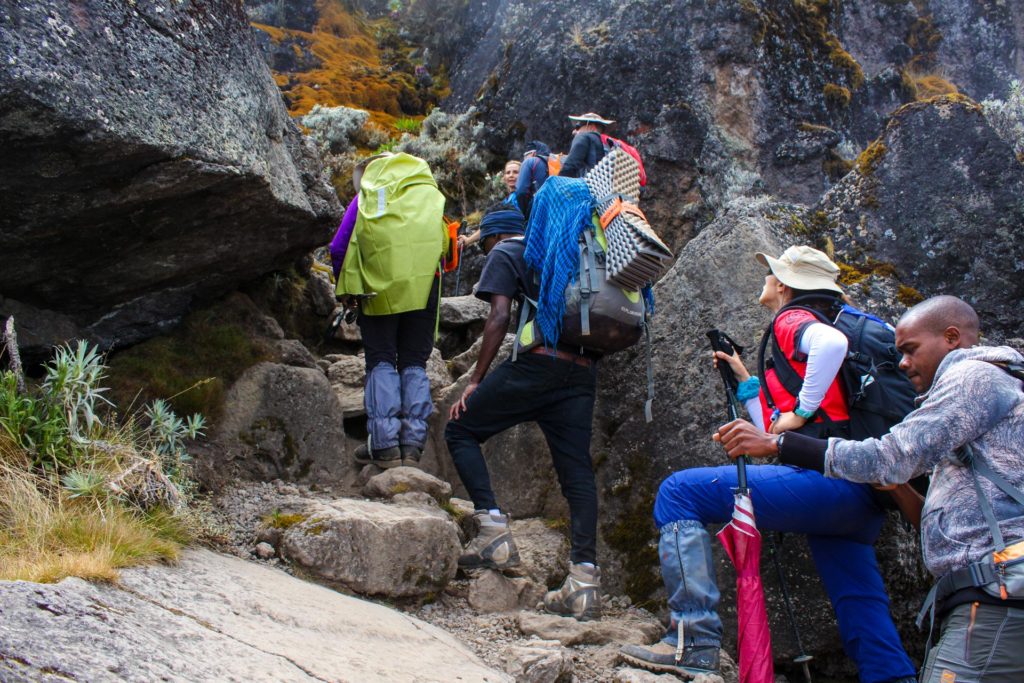
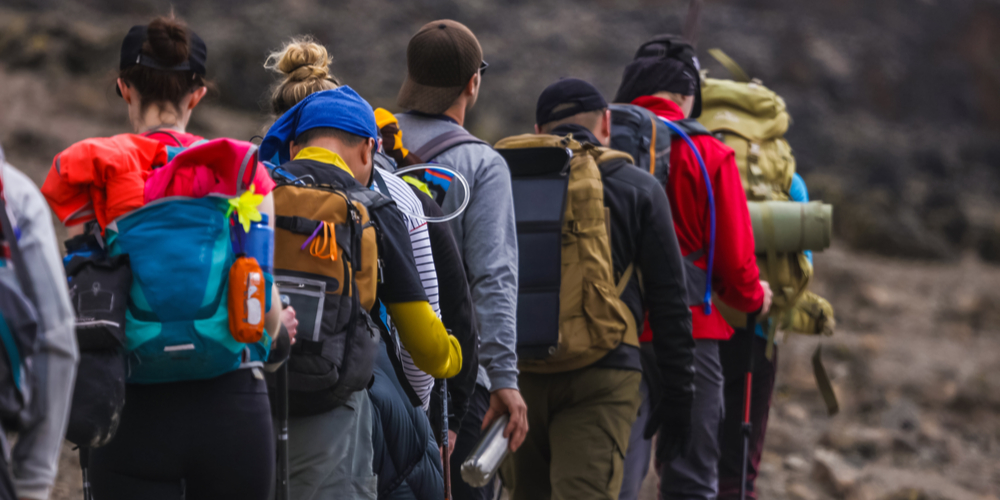
“Soft” skills
Rapport and communication – often overlooked, these skills are one among the foremost essential to form your Kilimanjaro experience a lifetime memory. Kilimanjaro trekkers arrive from different countries around the globe and have different social backgrounds. While some are talkative and sociable, others could also be more reticent and introverted. the primary minutes together are enough for our guides to know what sort of an individual they’re talking to the height of Kilimanjaro, and that they will adapt their behavior accordingly. you’ll never find them obtrusive or boring.
Leadership and encouragement – a head guide of a Kilimanjaro expedition aren’t just showing thanks to the summit, he actually leads the expedition. In practice meaning, he’s ensuring that the hikers don’t lose their motivation while moving closer to their goal. Summit night is usually a challenge, and therefore the guide’s task is to reinvigorate climbers, encourage them, and boost their stamina.
Teamwork and crew management techniques – though most of the time you’ll be in touch with the guide, one should remember that safety and success on a Kilimanjaro trekking may be a results of a collaborative effort of the many people: guides assistants, camp masters, cooks and porters. knowledgeable guide is responsible to form sure that there’s cohesion and cooperation in his team in the least times.
Good English-speaking skills – while any tourism professional working with the international clients is predicted to be proficient in English, in practicality finding a mountain guide with proficient English is sort of a task. All of our guides are fluent in English and ready to communicate easily with clients.
All you need to know: Kilimanjaro Guided Climb
It is the guiding and therefore the crew support that creates Mount Kilimanjaro climbing adventures fundamentally different from the opposite hikes on other popular mountaineering destinations. Many climbers say that the foremost memorable they need ever had was here in Kilimanjaro, and when asked why, always reply “because of the guides and high service level”.
So, this is often what makes a Kilimanjaro guide different from the opposite popular climbs:
It is a cushy adventure – all preparations and camping arrangements are made by the crew. On the opposite popular hikes the participants often need to do some camp chores, i.e. to hold the tents, pitch the tents or cook the meals. On Mt Kilimanjaro, however, the crew will lookout for everything. Well-trained porters are going to be carrying both the camping equipment and therefore the hikers’ gear. Our special qualified mountain cooks will take over the kitchen and prepare delicious fresh meals, while the camp masters will have the camp deployed timely and professionally.
Basically, the hikers’ responsibility is to truly hike and luxuriate in the views of Kilimanjaro around them.


Why do the best Kilimanjaro guides work for Kilimanjaro 360?
We attract the simplest talents on Kilimanjaro. reciprocally for his or her commitment and skills, we provide our guides the following:
- Above-the-market salary package. we’ve lucrative salaries, which is one of the most reasons why the simplest guides work for us. Kilimanjaro 360 hires multiple staffs fresh graduates and seasoned Kilimanjaro climbing professionals.
- And we are the sole company in Kilimanjaro to simply accept applications through the special web service.
- Regular climbs. Each lead guide at Kilimanjaro 360 makes 24-35 climbs per annum , frequent climbs mean that they continue to be experts on trekking Kilimanjaro.
- Participation in media projects on Kilimanjaro. Our media projects on Kilimanjaro, like the primary wingsuit Base-jump on Kilimanjaro (in cooperation with Red Bull), would are impossible without our guides, and that they are cognizant that employment with us means an excellent chance to be featured within the international media.
- Biannual professional training workshops. Every April and November all our guides attend a compulsory training workshop. We invite the simplest international guides to share their experience and secrets with our team leaders; this training makes our lead guides truly exceptional.
- Medical insurance. Medical insurance has always been a neighborhood of our employment packages for all employees. Each guide is aware that just in case any ill befall him during the expedition, his family are going to be supported.
- Post-guiding careers. After reaching the age of retirement, the foremost dedicated guides are invited to hitch our office as mentors to share their skills and invaluable experience with the new cohort of team leaders.
Mount Kilimanjaro Porters
Kilimanjaro porters are the backbone of each expedition and a really special breed of mountaineers, whose fitness and stamina always draw the surprising looks of Kilimanjaro trekkers. Trudging uphill, the exhausted hikers are often astonished to ascertain the galloping team of porters, heavily loaded with camping equipment, seeming to possess no difficulties whatsoever.
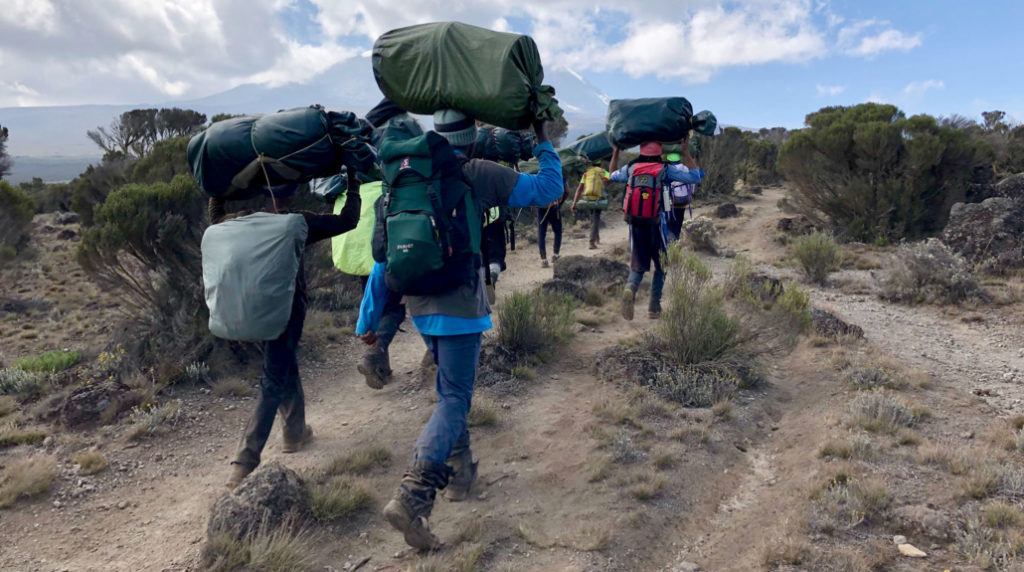
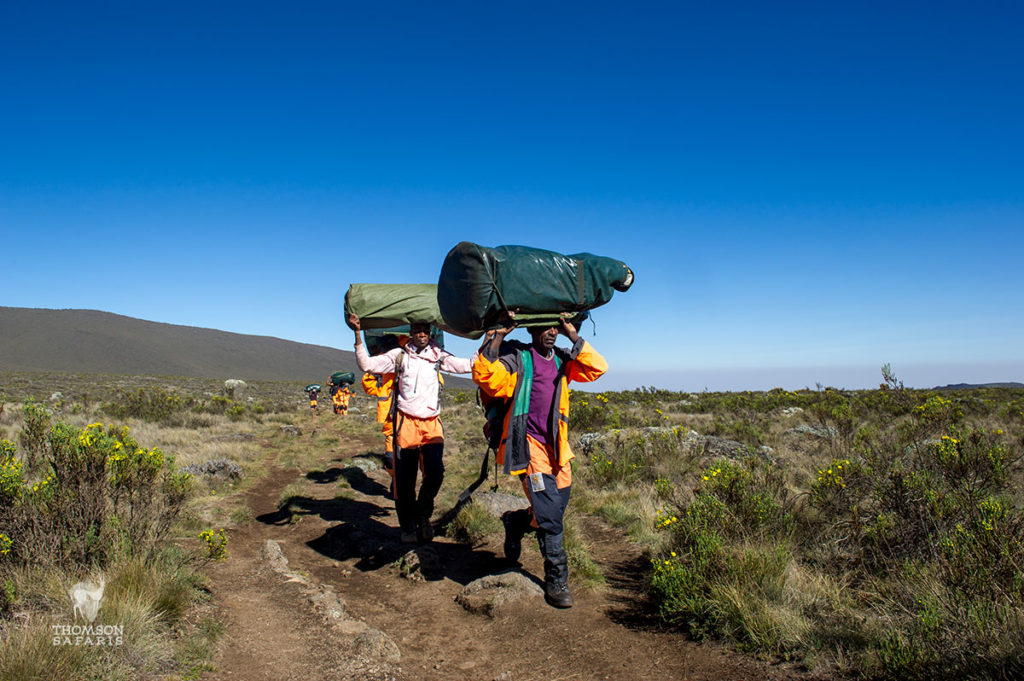
The pottering crews have tons of important responsibilities, such as:
Carrying the camping equipment and supplies. While climbing Mt Kilimanjaro, you’ll notice that the tent which you allow within the morning by some magical force re-appears within the next one, pitched, cleaned, and prepared for you. The magic is definitely explainable; the team of porters, coordinated by the camp master, disassemble your tents within the morning immediately after your departure, pack them, then outpace the trekkers to form sure the tents are cleaned and pitched again within the next camp.
Apart from carrying the tents you sleep in, the porters also are tasked with carrying other camp essentials – dining (mess) tent, chairs, tables, food, and water supplies. Here at Kilimanjaro 360 we rigorously control that every porter’s load doesn’t exceed 15 kg.
Carrying your gear. Each climber has 10-14 kg of private gear which he or she is going to use on a particular day of the trip. All this is often packed during a special duffle bag (you may read more about the gear here) and one among the porters is going to be carrying it up to the summit camp.
Fetching water. there’s no plumbing within the high-altitude camps of Kilimanjaro. The porters fetch water for drinking, hygiene, and cooking from the nearby mountain springs. Though most of the camps are near the sources of water, once the group arrives at the summit camps the task becomes far more challenging. Porters need to walk with cans about 5 km right down to the spring, collect water then hike back to the camp. Rainy or windy conditions are never an excuse – the camp and therefore the kitchen can’t stay without water.
Serving meals within the dining (mess) tent. a number of the porters will work as “waiters” – they’re going to be bringing the meals and drinks from the kitchen tent and serving them. After the hikers finish and go resting (or hiking), these porters will wash the dishes and prepare the kitchenware for subsequent meals.
Collecting trash. the sweetness of Mt Kilimanjaro should be preserved for the longer term generations, and whatever trash, garbage and waste is produced by the expedition members, it’s always removed from the Mountain by the special “cleaners”.
The work of our cleaning teams isn’t just restricted to the waste of our expeditions – because we deeply care about the environment of Kilimanjaro, we attempt to clean even what was left by the irresponsible trekkers led by the opposite tour operators.
Assisting the guides on the summit night. Normally, the porters don’t summit. Yet, there’s a special breed of them – the so-called “summit porters” – who reinforce the climbing crew for the very final leg of the trip. These people help the guides to form sure that each hiker is safe and cozy. alongside your guides, the summit porters are going to be carrying hot tea, biscuits, and oxygen to form sure that you simply are warmed and energized to stay trekking to the summit.
As you’ll see, the porters on Kilimanjaro have many responsibilities, and that we cannot imagine a secure and successful expedition without their support.
Porter Welfare Treatment
Due to the booming tourism industriousness, multiplex folks from throughout Tanzania flock to the Kilimanjaro area in quest of labor. Because the entry- rank necessities are like low, pottering has run one among the foremost popular occupations presently. so on be permitted to work as a doorman on Mt Kilimanjaro, an contender just possesses to pay the damage of TSH 10,000/ ( about USD3.5), for a porter ’s license.
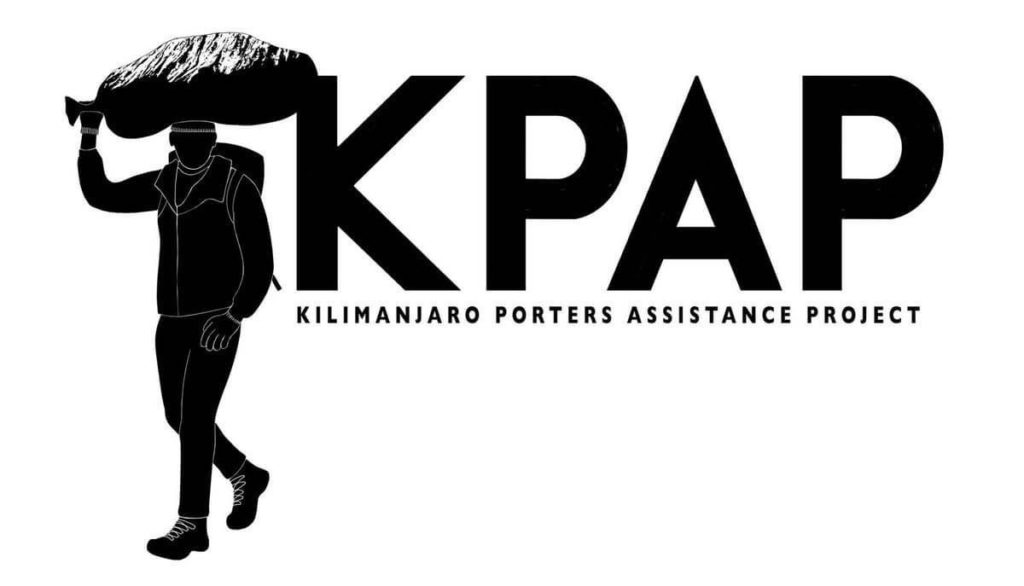
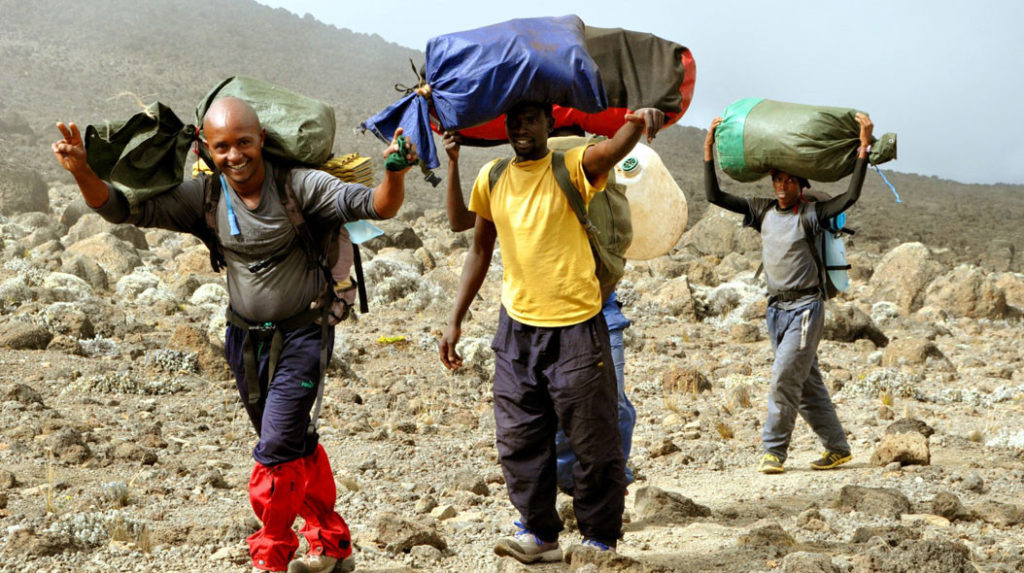
The number of these seeking work as a porter is far above the amount of Kilimanjaro expeditions and each year the workforce rises further. Anytime you come to the trailhead of Machame and Marangu routes (the hottest routes on Mt Kilimanjaro), you’ll see many children desperately waiting to be hired on the spot.
The fact that the market is oversaturated opened the way for all types of abuses. so as to urge hired, the porters often comply with work for lower wages than normally accepted within the industry. they’ll comply with work for minimal pay and check in for the expeditions with substandard equipment, scanty meals, and no team support.
Regrettably, so as to be ready to offer a way lower cost to the clients, some budget companies don’t pay the specified minimum salary and don’t invest within the equipment and safety of their teams.
The proliferation of the unlicensed, garage-based Mount Kilimanjaro “operators” has led to the subsequent plights of the porters:
Carrying quite too much than allowed Under the principles of Kilimanjaro National Park, each porter is restricted to hold not quite 20 kg. Some companies, however, are finding creative ways to сheat the rangers, and, eventually, a number of the porters find themselves carrying 30 kg and more, which isn’t just dangerous for them, but also deprives other porters of labor.
Here at Kilimanjaro 360, we follow a well-established maximum of 20 kg per porter. All of the socially responsible companies do an equivalent. aside from being checked by the Kilimanjaro conservationist rangers upon entry to the Kilimanjaro route trails, the load of our porters is carefully checked by our Kilimanjaro 360 guides and their assistants.
Poor meals. One can easily imagine what proportion of energy a porter must perform his job well. However, the meals of the crew are another area where budget companies attempt to economize. Thus, the situations when a porter Eats’ just two (or even one) meals each day are common here. Most of the businesses seldom (or never) include meat into the porter’s menu, restricting their diet to ugali (local porridge) and a few beans at the best.
Our porters receive three nutritious meals each day, and apart from ugali and beans, their diet includes meat (goat and beef), eggs, potatoes, rice, spinach vegetables, tea, and bread. an easy menu, yet rich in calories and carbohydrates. and that we can proudly say that our porters never go asleep with an empty stomach.
Shoddy tents. Many budget companies are using inferior tents. As a result, their porters often suffer from hypothermia when the weather becomes bad. per annum, a number of them die, but the climbers are seldom conscious of that.
The porters of Kilimanjaro 360 sleep in good-quality, sturdy, custom-designed tents, which give good protection from inclement weather and draughts. Each hiker is welcome to go to the porters’ area at one of our high-altitude camps on Kilimanjaro and inspect their living conditions.
Low-grade equipment. we will confidently say that nearly all porters performing on Mt Kilimanjaro are freelancers, meaning that everyone is meant to possess a group of the required gear to be ready to find work. Who regulates this and determines that their gear is up to the plain which they need all the required equipment for a secure climb?
All of the porters on Kilimanjaro 360 climbing teams have acceptable gear, which is checked to be safe and up to climbing standards. We don’t allow our porters to climb with low-grade equipment because we care about the security of our staff.
Can You Climb Mount Kilimanjaro Without a Guide?
Yes, you’ll not. Under the National Parks hiking Regulations of Tanzania, each trekking group should be amid a licensed guide.
Under the law, the porters aren’t a requirement – their participation within the expedition is usually a results of the evolution of the climbing industry. a number of the Kilimanjaro outfitters are offering “light” packages, where you’ll be amid the guide only. Yet, this feature is suitable for the experienced climbers only, who have taken part in other high-altitude trips and skills to line up a camp, cook meals at the altitude, and otherwise survive within the wilderness. These climbers should be also physically fit and capable of carrying up to twenty kg of expedition supplies and kit .
Conclusion
Tanzanian law requires that you simply climb Kilimanjaro under the leadership of a licensed guide. A capable and professional guide is that the most vital facet of your climbing expedition and will not be considered lightly. Kilimanjaro 360 ensures top training for our lead guides, including bi-annual professional development, and requires all guides, including assistants, to possess specialized training for first-aid and hypoxia .
While technically porters and cooks aren’t required, we believe they’re an important a part of an excellent climb. Not only do these team roles enhance your trip, but they will also ensure your safety with healthy meals and carrying your essentials.
For a memorable and safe climb, travel with a Kilimanjaro 360 climbing team, which incorporates knowledgeable guide, porters, and cooks.
With spirit of Kilimanjaro, you get top-quality service without the inflated cost. Our goal is to work with you to form the right itinerary that supported your needs, abilities, and desires. we’ll assist you to plan every aspect of your climb, providing everything you’d like for a successful summit and enjoyable experience. Won’t you join us on the roof of Africa?
Get a Newsletter
* Join the newsletter to receive our best monthly deals
- CLIMB KILIMANJARO
- KILIMANJARO CLIMBING GUIDE
- MOUNT MERU CLIMB
- ARUSHA
- MOSHI
Enquire Today
Start Planning Your Tanzania Holiday
Please fill in all fields – an email will be sent with complete journey details.
